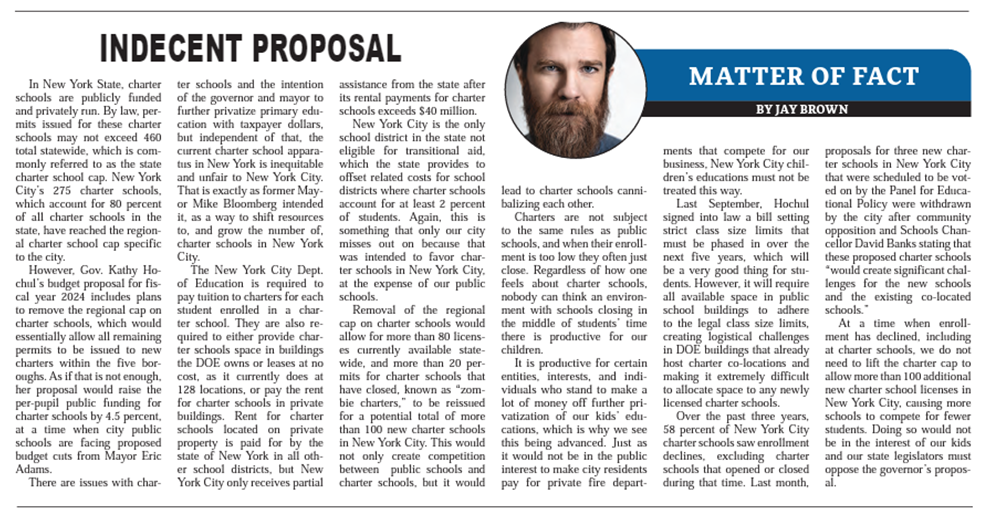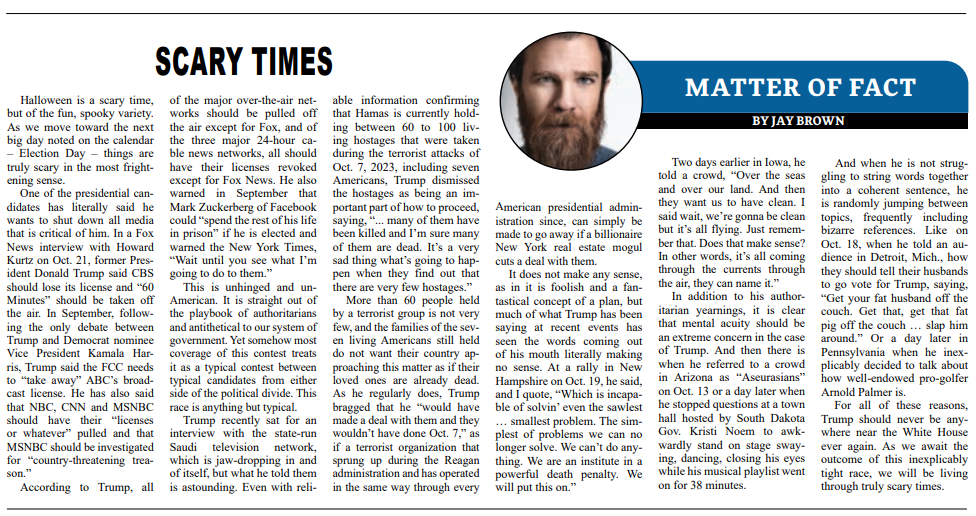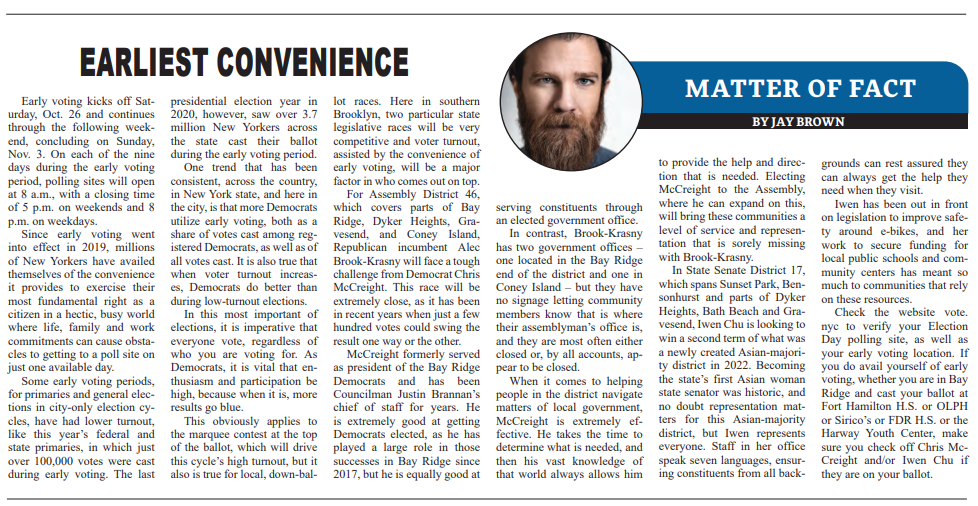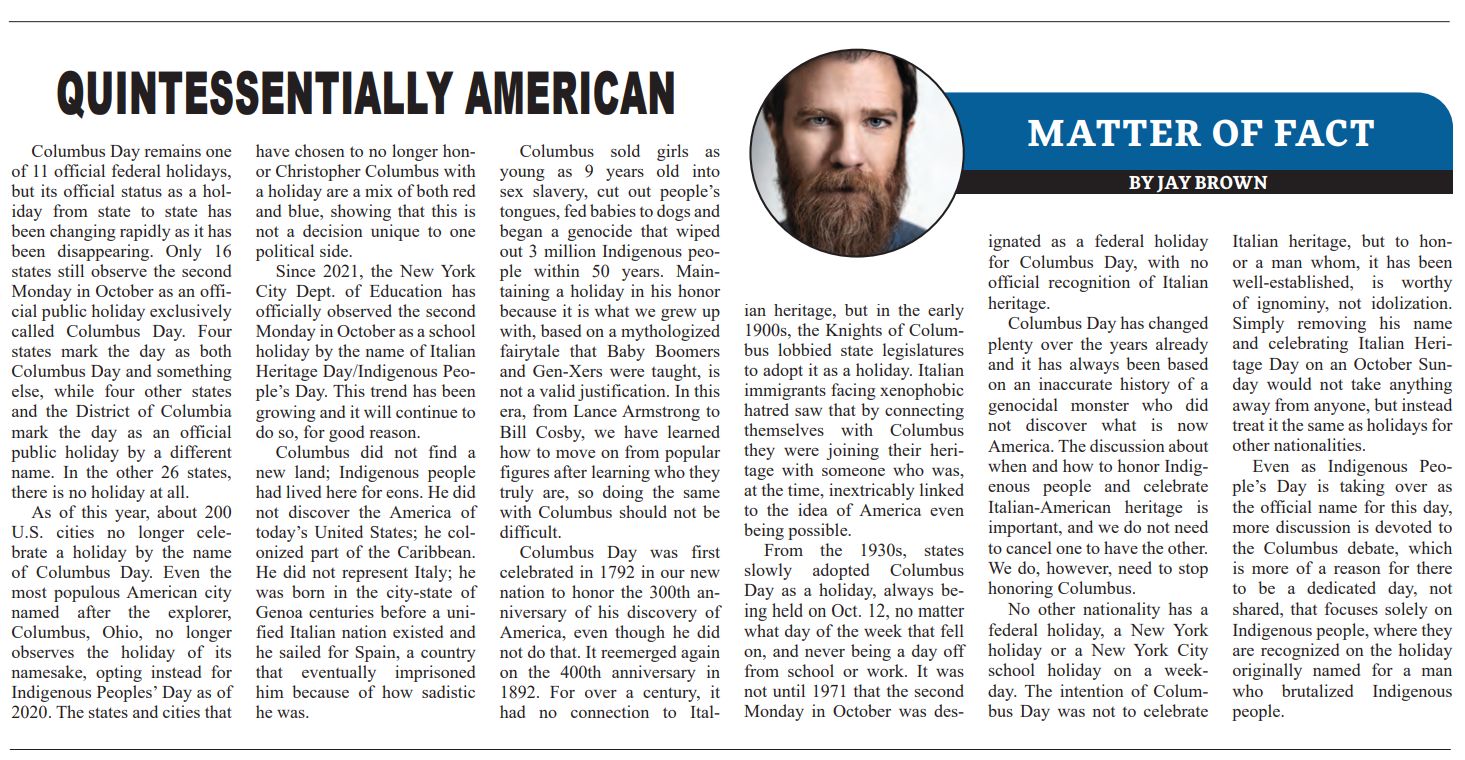This column, from the weekly opinion piece MATTER OF FACT, first appeared on BrooklynReporter.com, the Home Reporter and Spectator dated March 3, 2023
In New York state, charter schools are publicly funded and privately run. By law, permits issued for these charter schools may not exceed 460 total statewide, which is commonly referred to as the state charter school cap. New York City’s 275 charter schools, which account for 80 percent of all charter schools in the state, have reached the regional charter school cap specific to the City.
However, Governor Hochul’s budget proposal for fiscal year 2024 includes plans to remove the regional cap on charter schools, which would essentially allow all remaining permits to be issued to new charters within the five boroughs. As if that is not enough, her proposal would raise the per-pupil public funding for charter schools by 4.5 percent, at a time when city public schools are facing proposed budget cuts from Mayor Adams.
There are issues with charter schools and the intention of the governor and mayor to further privatize primary education with tax-payer dollars, but independent of that, the current charter school apparatus in New York is inequitable and unfair to New York City. That is exactly as former-Mayor Bloomberg intended it, as a way to shift resources to, and grow the number of, charter schools in New York City.
The New York City Department of Education is required to pay tuition to charter schools for each student enrolled in a charter school. They are also required to either provide charter schools space in buildings the DOE owns or leases at no cost, as it currently does at 128 locations, or pay the rent for charter schools in private buildings. Rent for charter schools located on private property is paid for by the state of New York in all other school districts, but New York City only receives partial assistance from the state after its rental payments for charter schools exceeds $40 million.
New York City is the only school district in the state not eligible for transitional aid, which the state proivides to offset related costs for school districts where charter schools account for at least 2 percent of students. Again, this is something that only our city misses out on because that was intended to favor charter schools in New York City, at the expense of our public schools.
Removal of the regional cap on charter schools would allow for more than 80 licenses currently available statewide, and more than 20 permits for charter schools that have closed, known as “zombie charters,” to be reissued for a potential total of more than 100 new charter schools in New York City. This would not only create competition between public schools and charter schools, but it would lead to charter schools cannibalizing each other. Charters are not subject to the same rules as public schools and when their enrollment is too low, they often just close. Regardless of how one feels about charter schools, nobody can think an environment with schools closing in the middle of students time there is productive for our children.
It is productive for certain entities, interests, and individuals who stand to make a lot of money off further privatization of our kids’ educations, which is why we see this being advanced. Just as it would not in the public interest to make city residents pay for private fire departments that compete for our business, New York City children’s educations must not be treated this way.
Last September, Governor Hochul signed into law a bill setting strict class size limits that must be phased in over the next five years, which will be a very good thing for students. However, it will require all available space in public school buildings to adhere to the legal class size limits, creating logistical challenges in DOE buildings that already host charter collocations and making it extremely difficult to allocate space to any newly licensed charter schools.
Over the past three years, 58 per cent of New York City charter schools saw enrollment declines, excluding charter schools that opened or closed during that time. Last month proposals for three new charter school in New York City that were scheduled to be voted on by the Panel for Educational Policy were withdrawn by the city after community opposition and Schools Chancellor David Banks stating that these proposed charter schools “would create significant challenges for the new schools and the existing co-located schools.”
At a time when enrollment has declined, including at charter schools, we do not need to lift the charter cap to allow more than 100 additional new charter school licenses in New York City, causing more schools to compete for fewer students. Doing so would not be in the interest of our kids and our state legislators must oppose the governor’s proposal.




